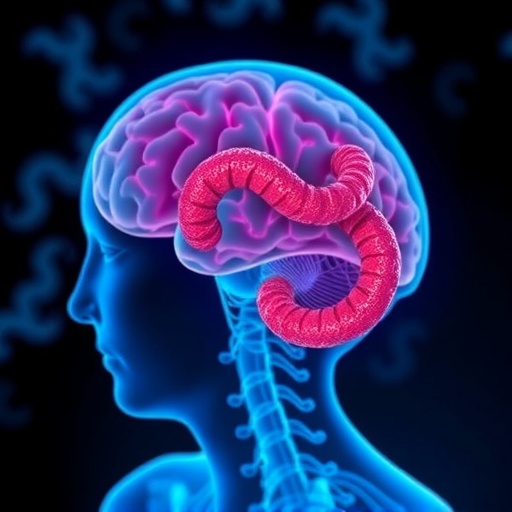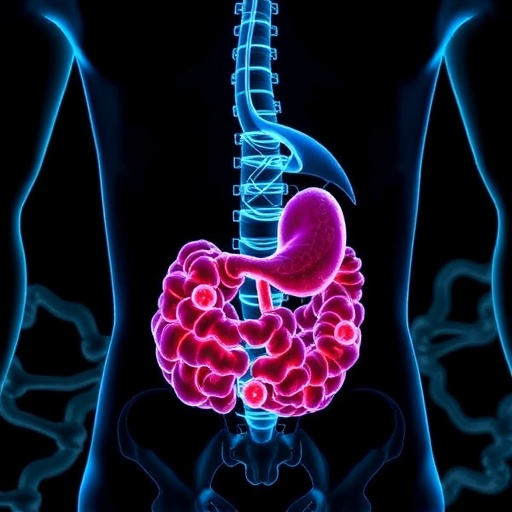
Emerging from the rapidly evolving fields of geriatric medicine and rehabilitation, the study of osteosarcopenia has gained significant attention in recent years. Osteosarcopenia encompasses a dual condition characterized by the absence of both muscle mass and bone density. As populations age globally, the prevalence of skeletal-related disorders has surged, creating a pressing need for effective interventions to enhance the quality of life among older adults. Recent findings by researchers, notably Şengül Ayçiçek and colleagues, shed light on the critical relationship between muscle-specific strength and functional outcomes in patients suffering from osteosarcopenia, offering new insights into the management of this debilitating condition.
Osteosarcopenia is marked by the combined effects of sarcopenia and osteoporosis. Sarcopenia, or the degenerative loss of skeletal muscle mass, leads to weakened muscles, while osteoporosis involves the deterioration of bone tissue, increasing fracture risk. The synergy of these two conditions can drastically impair mobility, increase vulnerability to falls, and reduce overall functional independence among older adults. This recent research dives deep into how muscle-specific strength, a targeted measure of strength in various muscle groups, correlates with functional abilities, ultimately providing a roadmap for improved treatment approaches.
The researchers undertook a comprehensive analysis to understand the functional correlates of muscle-specific strength in a cohort of patients diagnosed with osteosarcopenia. By employing advanced methodologies that included detailed assessments of muscle strength across specific muscle groups, the team meticulously evaluated how these strengths influenced overall patient functionality. Such focused investigations are crucial as they inform clinicians about which muscle groups require targeted strengthening in rehabilitation efforts to enhance patient outcomes effectively.
Functional correlates—the relationship between muscle strength and the ability to perform everyday activities—are integral to understanding the impact of osteosarcopenia on quality of life. Patients grappling with osteosarcopenia frequently face difficulties in undertaking simple actions, such as standing up from a chair, climbing stairs, or engaging in social activities. By detailing these functional correlates, the research emphasizes the importance of muscle-specific strength training as a therapeutic avenue to restore some independence and vitality for these patients.
One of the most compelling aspects of the study is its encouragement of a personalized approach to treatment. The researchers have called attention to the necessity for individualized strength training programs that consider the unique muscle-specific weaknesses found in patients with osteosarcopenia. This personalized approach ensures that rehabilitation efforts are not only efficient but also maximize the potential for functional recovery, allowing patients to reclaim lost abilities in their daily lives.
The significance of the research extends beyond immediate rehabilitation practices; it has implications for public health policies aimed at safeguarding the well-being of aging populations. As the field of geriatrics continues to evolve, incorporating findings from such studies into community health initiatives could lead to the development of widespread screening and intervention programs. This proactive stance may mitigate the burden of osteosarcopenia on healthcare systems and enhance the overall health trajectory of older adults.
Furthermore, the implications of muscle-specific strength go beyond physical health, intertwining with psychological well-being. Studies have long established that maintaining functional independence correlates with higher levels of mental health and overall life satisfaction. By empowering patients through strength training, healthcare professionals can help mitigate feelings of helplessness, promote self-esteem, and heighten overall engagement in the community. These psychosocial benefits emphasize the holistic value of addressing physical ailments.
In tandem with the findings of muscle-specific strength, the researchers employed a range of diagnostic tools to measure bone density in conjunction with muscle assessments. Such comprehensive analysis underscores the intertwined nature of muscle and bone health and reinforces the notion that a dual approach to treatment is essential. This includes the integration of nutritional interventions alongside strength training, as adequate protein intake and vitamin D levels are paramount for both muscle and bone health maintenance.
The collaboration among the authors, including Şengül Ayçiçek, Caran Karabacak, and B. Gökçe, highlights the importance of multidisciplinary research approaches. The cross-pollination of ideas from experts in fields such as geriatrics, nutrition, exercise science, and rehabilitation culminates in a robust understanding of osteosarcopenia. This collaboration paves the way for future studies to build upon these findings, exploring how integrated care strategies can further enhance the quality of life for this vulnerable population.
Looking forward, the research calls for larger-scale studies that not only validate the current findings but also expand the understanding of muscle-specific strength in varied demographic settings. As researchers harness advanced technologies such as wearable devices and artificial intelligence to monitor and analyze patient data, future studies will likely offer even more personalized insights into the treatment of osteosarcopenia.
In summary, the latest research by Şengül Ayçiçek and colleagues underscores an urgent need for comprehensive approaches to address muscle-specific strength in patients with osteosarcopenia. The promise of tailored rehabilitation programs and community health initiatives offers a beacon of hope for elderly individuals grappling with the debilitating effects of this condition. By leveraging insights into functional correlates and the holistic benefits of improved muscle health, healthcare providers can usher in a new era of care that prioritizes the independence and well-being of older adults.
As the scientific community continues to unravel the complexities of osteosarcopenia, one thing remains clear: understanding and improving muscle-specific strength is not just a medical goal but a necessary avenue to enhance the overall dignity and quality of life for aging populations across the globe.
Subject of Research: Osteosarcopenia and its impact on muscle-specific strength and functional correlates in elderly patients.
Article Title: Muscle-specific strength and its functional correlates in patients with osteosarcopenia.
Article References:
Şengül Ayçiçek, G., Caran Karabacak, E., Gökçe, B. et al. Muscle-specific strength and its functional correlates in patients with osteosarcopenia.
Eur Geriatr Med (2025). https://doi.org/10.1007/s41999-025-01256-2
Image Credits: AI Generated
DOI: 10.1007/s41999-025-01256-2
Keywords: Osteosarcopenia, muscle-specific strength, functional correlates, elderly patients, rehabilitation.
Tags: dual condition of sarcopenia and osteoporosisenhancing quality of life in elderlygeriatric medicine advancementsimpact of sarcopenia on mobilityimproving treatment approaches for osteosarcopeniainterventions for skeletal-related disordersmuscle strength and functional outcomesmuscle-specific strength assessmentosteoporosis and fracture risk in agingosteosarcopenia in older adultsrehabilitation strategies for older patientsrelationship between muscle mass and bone density




